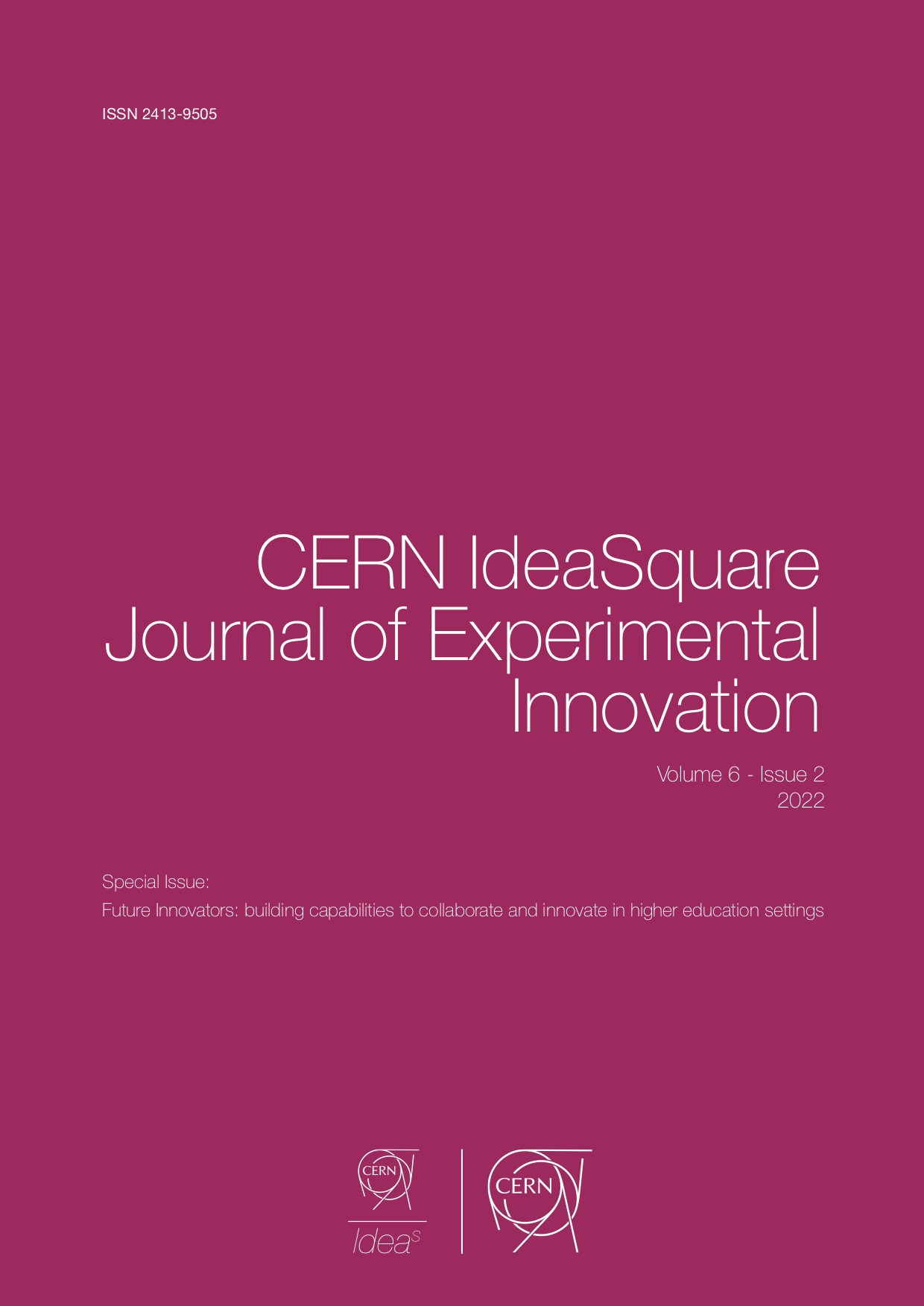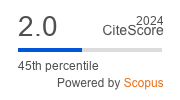Looking beyond your own speciality: student and faculty perceptions of collaboration opportunities
DOI:
https://doi.org/10.23726/cij.2022.1395Keywords:
Collaboration, Engineering education, MultidisciplinaryAbstract
This study examines engineering faculty and students’ views of collaboration beyond their own field, based on 12 engineering faculty interviews and a survey with 101 mechanical engineering students. Our analysis shows that faculty members’ views on collaboration exhibit more diversity in terms of crossing disciplinary, functional, organisational, and geographic boundaries, and they view this collaboration as more integrated into engineering work, professional practices, and problem-solving. Students, in turn, report a narrower scope of collaboration, primarily focusing on multidisciplinary collaboration to utilise engineering output. Our study helps inform engineering educators to integrate diverse collaboration more effectively with course design.
References
ABET., 2022, Criteria for Accrediting Engineering Programs, 2022–2023. Accrediting Board for Engineering and Technology. Last retrieved 18.5.2022 from https://www.abet.org/accreditation/accreditation-criteria/criteria-for-accrediting-engineering-programs-2022-2023/
Ahmed, S., Wallace, K.M. & Blessing, L.T.M., 2003, Understanding the differences between how novice and experienced designers approach design tasks. Research in Engineering Design; 14: 1-11.
Akkerman, S. F., & Bakker, A., 2011, Boundary Crossing and Boundary Objects. Review of Educational Research; 81(2): 132–169.
Alves, A. C., Sousa, R. M., Fernandes, S., Cardoso, E., Carvalho, M. A., Figueiredo, J., & Pereira, R. M., 2016, Teacher's experiences in PBL: implications for practice, European Journal of Engineering Education; 41(2): 123-141.
Björklund, T. A., 2013, Initial mental representations of design problems: Differences between experts and novices, Design Studies; 34(2): 135-160.
Borrego, M., & Newswander, L. K., 2008, Characteristics of Successful Cross-disciplinary Engineering Education Collaborations, Journal of Engineering Education; 97(2): 123–134.
Borrego, M., Froyd, J. E., & Hall, T. S., 2010, Diffusion of engineering education innovations: A survey of awareness and adoption rates in US engineering departments, Journal of Engineering Education; 99(3): 185-207.
Borrego, M., Karlin, J., McNair, L. D., & Beddoes, K., 2013, Team effectiveness theory from industrial and organizational psychology applied to engineering student project teams: A research review, Journal of Engineering Education; 102(4): 472-512.
Braun V, Clarke V., 2006, Using Thematic Analysis in Psychology, Qualitative Research in Psychology. 3: 77–101.
Celio, C., Durlak, J., & Dymnicki, A., 2011, A meta-analysis of the impact of service-learning on students, The Journal of Experimental Education; 34(2): 164–181.
Charmaz, K., 2006, Constructing grounded theory: A practical guide through qualitative analysis. SAGE, Thousand Oaks, CA, USA.
Costa, A. R., Ferreira, M., Barata, A., Viterbo, C., Rodrigues, J. S., & Magalhães, J., 2019, Impact of interdisciplinary learning on the development of engineering students’ skills, European Journal of Engineering Education; 44(4): 589–601.
Creswell, J. W., 2002, Educational research: Planning, conducting, and evaluating quantitative (Vol. 7). Prentice Hall Upper Saddle River, NJ, USA.
Cross, N., 2004, Expertise in design: an overview, Design Studies; 25: 427-441.
Dringenberg, E., & Purzer, Ş., 2018, Experiences of first‐year engineering students working on ill‐structured problems in teams, Journal of Engineering Education; 107(3): 442-467.
Dunlap, J.C., 2005. Problem-based learning and self-efficacy: How a capstone course prepares students for a profession, Educational Technology Research and Development; 53(1): 65-83.
Eccles, J. S., & Wigfield, A., 2002, Motivational beliefs, values, and goals. Annual review of psychology; 53(1): 109-132.
Engineering Council., 2020, The Accreditation of Higher Education Programmes (AHEP). Fourth Edition. Last retrieved 18.5.2022 from https://www.engc.org.uk/media/3464/ahep-fourth-edition.pdf
Engineers Australia., 2010, Accreditation Criteria Guidelines.
Ericsson, K. A., Charness, N., Feltovich, P., & Hoffman, R. R. (Eds.)., 2006, The Cambridge handbook of expertise and expert performance. Cambridge University Press, New York, NY, USA.
Eteläpelto, A., 2000, Contextual and strategic knowledge in the acquisition of design expertise. Learning and Instruction; 10: 113-136.
Gillen, A. L., Grohs, J. R., Matusovich, H. M., & Kirk, G. R., 2021, A multiple case study of an interorganizational collaboration: Exploring the first year of an industry partnership focused on middle school engineering education, Journal of Engineering Education; 110(3): 545-571.
Huff, J. L., Zoltowski, C. B., & Oakes, W. C., 2016, Preparing engineers for the workplace through service learning: Perceptions of EPICS alumni, Journal of Engineering Education; 105(1): 43-69.
Jacoby, B., 2003, Building partnerships for service-learning. Wiley, Hoboken, NJ, USA.
Kolfschoten, G. L., de Vreede, G. J., Briggs, R. O., & Sol, H. G., 2010, Collaboration ‘engineerability’, Group Decision and Negotiation; 19(3): 301-321.
Lattuca, L. R., Knight, D. B., Ro, H. K., & Novoselich, B. J., 2017, Supporting the Development of Engineers’ Interdisciplinary Competence: Supporting Engineers’ Interdisciplinary Competence, Journal of Engineering Education; 106(1): 71–97.
Litchfield, K., Javernick‐Will, A., & Maul, A., 2016, Technical and professional skills of engineers involved and not involved in engineering service, Journal of Engineering Education; 105(1): 70-92.
Lönngren, J., 2021, Exploring the Discursive Construction of Ethics in An Introductory Engineering Course, Journal of Engineering Education; 110(1): 44-69.
MacLeod, M., & Van der Veen, J. T., 2020, Scaffolding interdisciplinary project-based learning: A case study, European Journal of Engineering Education; 45(3): 363–377.
Mavri, A., Ioannou, A., & Loizides, F., 2021, Cross-organisational communities of practice: enhancing creativity and epistemic cognition in higher education, The Internet and Higher Education; 49: 100792.
May, G. S., & Chubin, D. E., 2003, A retrospective on undergraduate engineering success for underrepresented minority students, Journal of Engineering Education; 92(1): 27-39.
McNair, L. D., Newswander, C., Boden, D., & Borrego, M., 2011, Student and faculty interdisciplinary identities in self‐managed teams, Journal of Engineering Education; 100(2): 374-396.
Merriam, S. B., & Tisdell, E. J., 2015, Qualitative research: A guide to design and implementation. John Wiley & Sons, Hoboken, NJ, USA.
Mikkonen, M., Tuulos, T. & Björklund, T.A., 2018, Perceived long-term value of industry project-based design courses: Alumni reflections from two decades of the Product Development Project. Nord Design 2018.
Oehlberg, L., Leighton, I., Agogino, A., & Hartmann, B., 2012, Teaching human-centered design innovation across engineering, humanities and social sciences, International Journal of Engineering Education; 28(2): 484.
Okhuysen, G.A. and Eisenhardt, K.M., 2002, Integrating Knowledge in Groups: How Formal Interventions Enable Flexibility, Organization Science; 13 (4): 370–86.
Perkmann, M., Tartari, V., McKelvey, M., Autio, E., Broström, A., D’Este, P., Fini, R., Geuna, A., Grimaldi, R., Hughes, A., Krabel, S., Kitson, M., Llerena, P., Lissoni, F., Salter, A., Sobrero, M., 2013, Academic engagement and commercialisation: A review of the literature on university–industry relations, Research Policy, pp. 423- 442.
Richter, D., & Paretti, M., 2009, Identifying barriers to and outcomes of interdisciplinarity in the engineering classroom, European Journal of Engineering Education; 34(1): 29-45.
Rojas, E. M., 2001, Fostering collaborative education through Internet technologies, Journal of Engineering Education; 90(4): 623-626.
Subramaniam, M., 2006, Integrating cross‐border knowledge for transnational new product development, Journal of Product Innovation Management; 23(6): 541-555.
Sochacka, N. W., Guyotte, K. W., & Walther, J., 2016, Learning together: A collaborative autoethnographic exploration of STEAM (STEM+ the Arts) education, Journal of Engineering Education; 105(1): 15-42.
Van Den Beemt, A., Thurlings, M., & Willems, M., 2020, Towards an understanding of social media use in the classroom: a literature review, Technology, Pedagogy and Education; 29(1): 35-55.
Downloads
Published
How to Cite
Issue
Section
Categories
License
Copyright (c) 2022 Xiaoqi Feng, Tua Björklund

This work is licensed under a Creative Commons Attribution 4.0 International License.
Authors who publish with this journal agree to the following terms:
- Authors retain copyright and grant the journal right of first publication with the work simultaneously licensed under a Creative Commons Attribution License that allows others to share the work with an acknowledgement of the work's authorship and initial publication in this journal.
- Authors are able to enter into separate, additional contractual arrangements for the non-exclusive distribution of the journal's published version of the work (e.g., post it to an institutional repository or publish it in a book), with an acknowledgement of its initial publication in this journal.
- Authors are permitted and encouraged to post their work online (e.g., in institutional repositories or on their website) prior to and during the submission process, as it can lead to productive exchanges, as well as earlier and greater citation of published work (See The Effect of Open Access).


